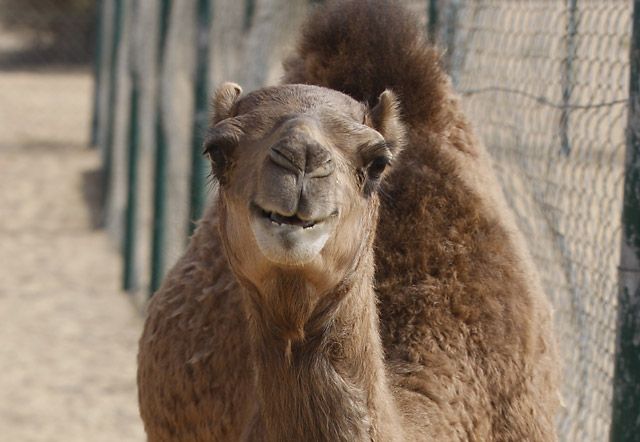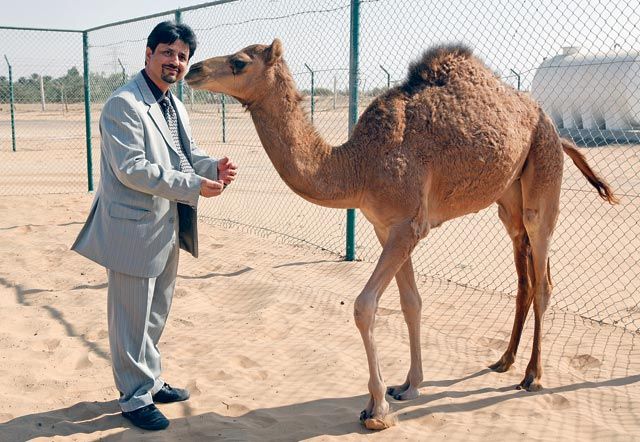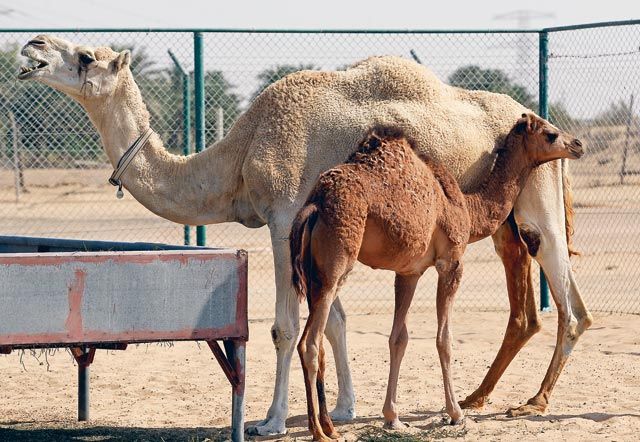Dubai: The world's first cloned camel has acted "pretty normal" since her birth eight months ago, scientists at the Camel Reproduction Centre (CRC) said on Monday.
Injaz, translated as ‘achievement', has been showing characteristics similar to that of a normal female calf and has been "eating and doing everything she should be doing".
She was formally unveiled to the world on Monday at a unique ceremony at the CRC, an unassuming building hidden in the desert just off the Hatta road. Dr Lulu Skidmore, Scientific Director at the CRC, said: "Injaz has grown like any normal calf; she's been eating and doing everything she should have done. She's fine and she's a relatively normal height and weight for a calf of her age.
"Because she's had so much attention she's obviously very friendly. But like most camel calves she'll come up to you, she'll nuzzle you and does everything that one would expect. She's trying to spit a lot more now, which is also pretty normal.
"Many animals have obviously already been cloned but Injaz is the first camelid to be cloned. Each species needs something different; there are different tweaks to each technique so it's useful to know we can know clone camels. Hopefully, we can now look into cloning other camelids such as the two-humped camel. It will be a very useful technique for the future."
Injaz, who now weighs around 80kg, was produced from cumulus cells harvested from the ovary of an adult female camel, which were grown in culture before being frozen in liquid nitrogen.
Dr Nisar Ahmad Wani, Senior Reproductive Biologist at the CRC, produced Injaz by injecting one of the adult cells into a camel oocyte (immature ovum or egg cell) from which the nucleus had been removed.
Process
The oocyte and the adult cell were then fused with a tiny split-second electrical pulse and chemically activated to induce them to start dividing just like a normal fertilised egg.
The resulting embryo was cultured for seven days before it was transferred back into the uterus of a surrogate camel. Pregnancy was diagnosed 20 days later by ultrasound and monitored thereafter for the next 12 months.
Injaz was born after an uncomplicated gestation period of 378 days.
Dr Wani said: "It's a significant breakthrough because this is the first ever camel clone in the world. There are many reasons to clone a camel. We can now clone good racing camels and good milk-producing camels. It also allows us to preserve genetic material. All my friends in the scientific community are excited about Injaz because a new species has been cloned; the main animal species in this part of the world.
"In the Gulf and many African countries, camels are fit for this type of climate and environment. This is the animal we should be looking at for cloning."
















